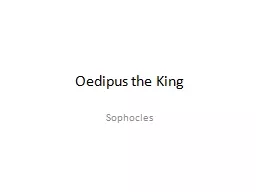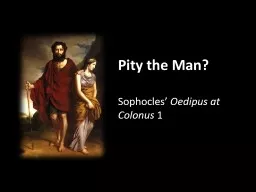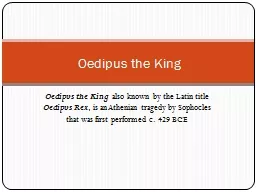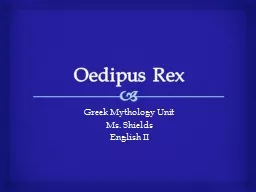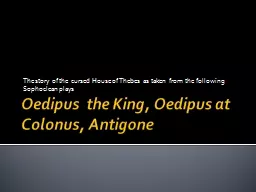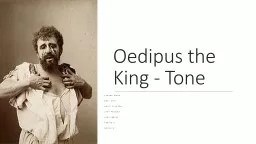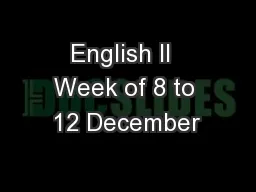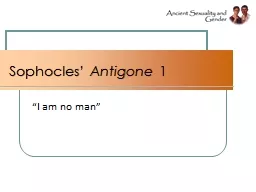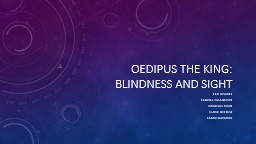PPT-Oedipus the King Sophocles
Author : test | Published Date : 2018-10-24
Irony Dramatic Irony Occurs when the audience is privy to knowledge that one or more of the characters lacks The technique can be used in for comic or tragic effects
Presentation Embed Code
Download Presentation
Download Presentation The PPT/PDF document "Oedipus the King Sophocles" is the property of its rightful owner. Permission is granted to download and print the materials on this website for personal, non-commercial use only, and to display it on your personal computer provided you do not modify the materials and that you retain all copyright notices contained in the materials. By downloading content from our website, you accept the terms of this agreement.
Oedipus the King Sophocles: Transcript
Download Rules Of Document
"Oedipus the King Sophocles"The content belongs to its owner. You may download and print it for personal use, without modification, and keep all copyright notices. By downloading, you agree to these terms.
Related Documents

